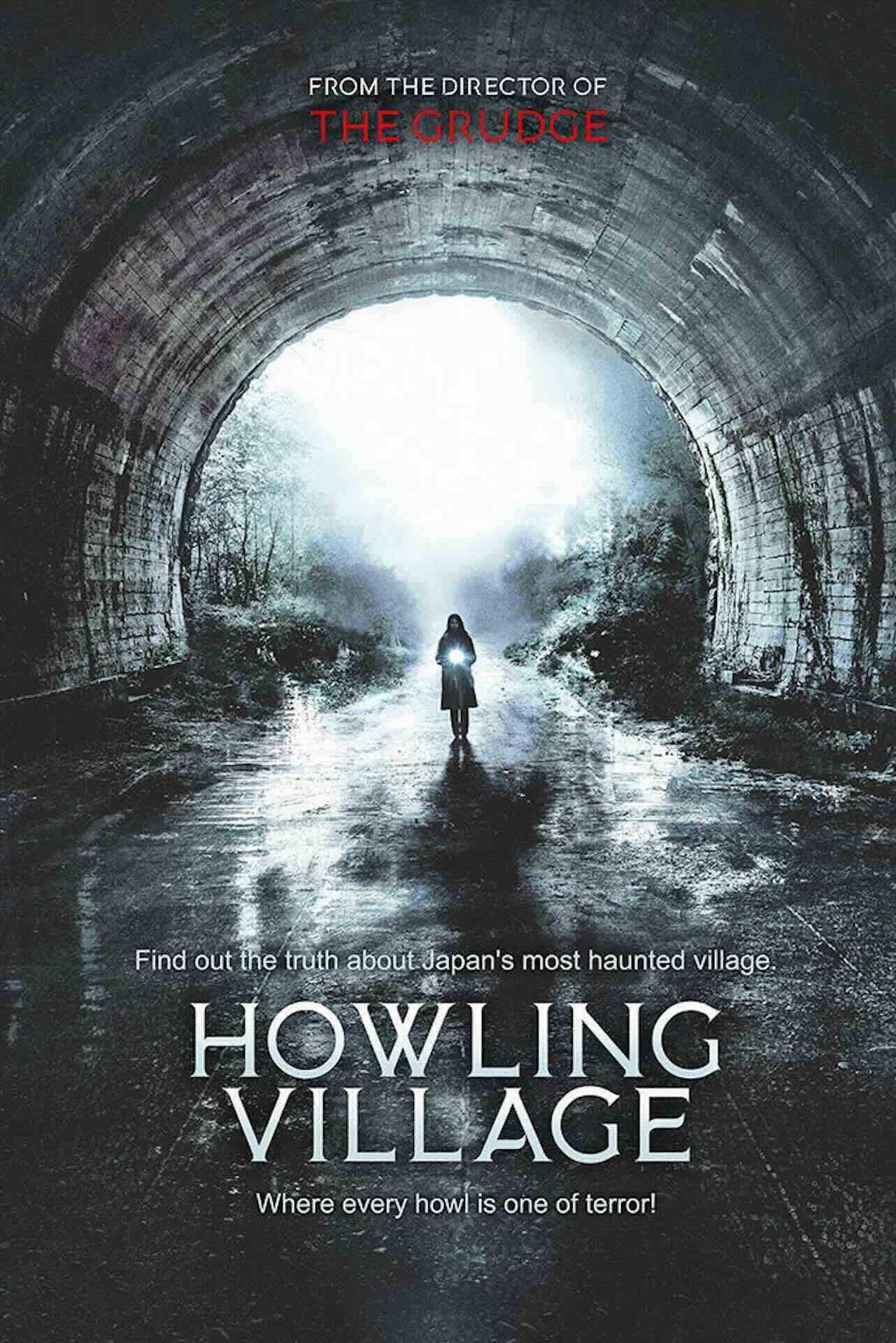Introduction
Director Takashi Shimizu, known for The Grudge films, brings us a tepid new offering in Howling Village. As a supernatural horror mystery, the Howling Village falls uncomfortably flat in its attempt to portray the small town versus big bad company trope.
While the film is adequately cast, and shot with an arthouse flavor. One must navigate the disconnected plot gaps in order to be awarded with a poorly executed, and at times laughable final reveal.
Synopsis
Yuma (Ryôta Bandô) and his girlfriend, Akina (Rinka Ôtani) are traumatized after they discover a tunnel to a haunted village, where Akina is attacked by strange creatures. She goes mad shortly after and commits suicide in a scene that can only be described as obtusely ridiculous.
Yuma’s sister, Kanata Morita (Ayaka Miyoshi), a psychologist sets out on a mission to unravel her family’s mysterious connection to the village. Kanata has the clairvoyant ability to see ghosts. A facet of her character development that never really gains traction until late in the story.
As childhood memories begin to come to the surface, Kanata uncovers her family’s part in the village’s demise. This as well as how her own unique ancestry is tied to the strange and now extinct community. As the death toll rises, she must accept the innate abilities gifted by her heritage, as she struggles to discover the truth about the Howling Village.
Analysis
In Howling Village, Shimizu attempts to establish an undercurrent of dread through tired tropes and vague horror scenes early on, but the final effect is one of boring confusion and disconnect, with patchwork clues explained haphazardly. The latticework of the plot is developed with painful vagueness.
While it can’t be said that Shimizu’s The Grudge is known for its stellar plot, its cult followers can boast that the movie was pretty scary for its time. Replete with icky visuals, fun jump scares, and a genuinely creepy haunting. Sadly, Howling Village fails to induce terror. Unlike The Grudge, the film lacks innovation or novelty. This is not Shimizu’s best work.
This is a ghost story with a message about the evils of greedy corporations. However, the message becomes diluted and lost in the general messiness of events. One might account some of the plot gaps in Howling Village as information lost in translation, since the movie is filmed in Japanese.
Critique
However, as the story moves on, it becomes obvious this is just bad direction, writing, and editing. The dead town folks are framed as victims of an evil scheme by a murderous electric company. Okay, fine, but then this ghost story makes a hard wrong turn when we discover the village partook in animal cruelty, among other bestial acts that are confirmed in the final “pay-off” reveal.
At this point, the film wades into the deep end of WTF territory and makes the haunted village feel like a place that should have maybe been destroyed? Even with early foreshadowing of rumored bestiality, the mind just kind of rejects it because it’s a stupid choice for the film.
It tarnishes the case for the villagers and makes them seem like a tribe of insane and abusive freaks. This polarized messaging is made worse by the lackluster special effects and terrible choreography of horror sequences. The camera work is confusing and ineffective resulting in scenes that should be frightening but are just blasé.
The climactic moment is shot so poorly, that it builds zero excitement or tension. When the Kanata and her brothers are facing the final bad guy, so to speak. They just stand quietly, clutching each other as the creature makes a painfully slow approach. It’s clumsy and awkward to watch. The camera and lighting works against the actors at every angle. It’s an unforgivably bad pay off. A searing brand of bad technical work on all fronts.
Cast
Center-stage actress Miyoshi is convincing as Kanata, and her character carries the majority of the film. She is committed to her scenes and overall, all the actors do a good job. The entire cast is clearly asked to keep their performances understated, as it feels like Shimizu was going for an intimate and pensive feel.
However, it doesn’t work. Although again, it isn’t on account of the performances. The actors do a decent job with what they are given. This despite the lack of solid character development. The cast deserves credit for delivering a decent performance.
Conclusion
There are very little merits to Howling Village and it stands at best to be background noise at your next Halloween party. If you are looking for a thumping good, Japanese horror film, Howling Village is not the one. Skip it, unless you love bad horror movies. In which case, please by all means, enjoy this hot mess of cinema with my blessing.
Howling Village will be released in select theaters August 13, On Demand August 17, and on Blu-Ray September 14, 2021.
